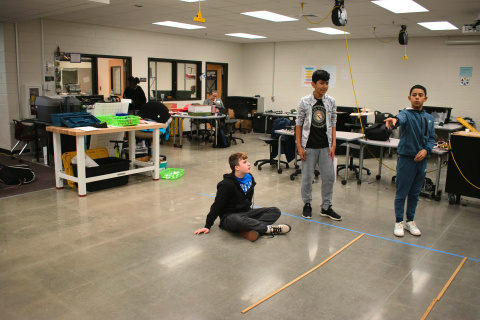Engineering Curriculum Drives STEM Engagement Across Georgia
It was the first large grant that Meltem Alemdar started working on as a co-principal investigator in her young career at Georgia Tech the $7.5 million AMP-IT-UP grant from the National Science Foundation (NSF) in 2012 was a big responsibility. The coordination, planning, execution, and evaluation involved in the related seven-year project was daunting. Now, reflecting on more than 15 years of STEM education grants and big projects — and the teachers and students influenced by them — she is very proud of the progress.
Alemdar’s day-to-day job is as a lead STEM education researcher at Georgia Tech’s Center for Education Integrating Science, Mathematics and Computing (CEISMC). For more than 30 years, CEISMC team members like Alemda have been diving deep into the Georgia K-12 education community, working to improve teaching and learning in STEM fields. One of their big successes is a curriculum called STEM-Innovation and Design (STEM-ID), a product of the seven-year long NSF AMP-IT-UP grant.
The curriculum outcomes in the original 2012 grant were so successful that a new scale-up project is currently being rolled out in almost a dozen schools across Georgia through an NSF-funded impact study. STEM-ID is a full three-year middle school curriculum designed to make learning science, technology, engineering, and math accessible, appealing, and fun. Using it, and the teacher training that goes along with it, CEISMC is working to ensure more students from every part of Georgia and from every background have a strong, engaging introduction into these fields and know the many ways a future vocation in these areas could be achieved.
As the principal investigator responsible for this $2.7 million STEM-ID grant for the scale-up project, Alemdar said, “I did not grow up in an environment where engineering was even a possibility for me as a little girl in middle school. Basically, it was a boy thing, and so I'm very passionate about making sure that everybody has similar opportunities to make a decision about their future.”
Alemdar leads this research with Jessica Gale, another CEISMC researcher.
One school using the STEM-ID curriculum is Jones Middle School, part of Gwinnett County Public Schools.
Additional Media

Students at Jones Middle School in Gwinnett County test the cradle they designed during the "Carnival Tycoon" design challenge. "Carnival Tycoon" is the 6th grade portion of Georgia Tech's STEM-ID curriculum.

Students at Jones Middle School in Gwinnett County test the aircraft they designed during the "Flight of Fancy" design challenge. "Flight of Fancy" is the 7th grade portion of Georgia Tech's STEM-ID curriculum.